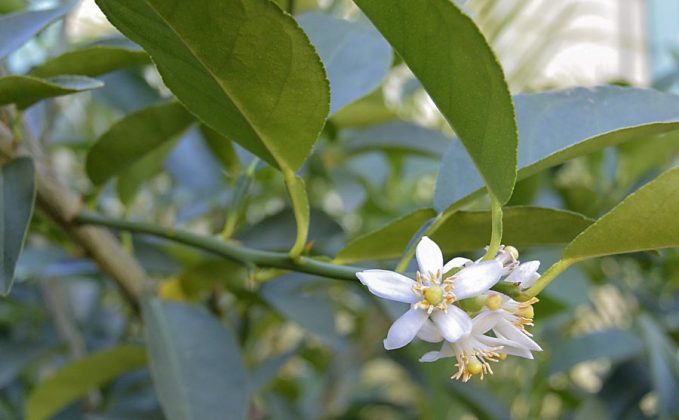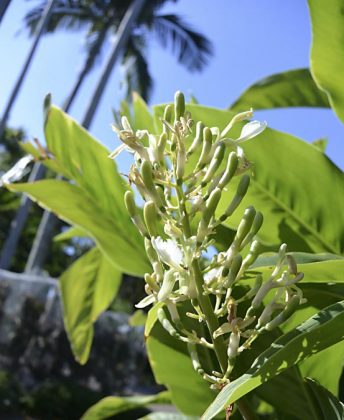Spiced rum is the beach in a bottle, a dash of pirate in a cocktail, or a sophisticated and eminently palatable spirit to sip. With this wealth of guises it is no surprise that spiced rum is increasingly popular. Large brands have encouraged and tapped into this by developing spiced rums in their portfolios of rum and flavored spirits. Infusing spices in rum changes its flavor and color more rapidly than aging rum in wooden barrels. This can create a quicker path to an end product that can be sold for a higher price.
A few centuries ago spiced rum was a product made possible by two shameful trade trajectories. Rum was a component of triangular slave trade routes through which slaves, sugar and rum were shunted across and along the Atlantic. Spice trade raised empires through bloody warfare fueled by the high value of spices. Today’s distillers working with paid staff and spices traded through fair supply routes are operating on a different basis.
Adding spices to rum wasn’t an idea initiated in one place. In England the combination of alcohol, fruit juice, water and spices was introduced by sailors who had been in India. This evolved into rum punch when rum entered the English market around the mid-17th century. Meanwhile, in Barbados, rum was combined with sugar and spices to make falernum. Most recipes for falernum include rum, lime, ginger, cloves and almonds (Prunus dulcis). Almonds are not native to and do not thrive in the Caribbean. It seems more likely that original Barbadian recipes for falernum would have used tropical almonds (Terminalia catappa), a species of tree introduced to the Caribbean from India. It thrives on tropical coasts and produces seeds that taste like almonds.
Ranks of rhum arrangé, meaning arranged rum, line local bars in several Indian Ocean islands to the east of Africa. Bartenders fill jars with rum, and in each one a different fruit, leaf or seed flavors the rum. If you speak French or have a French-speaking companion, spending time chatting with bartenders in Madagascar, Mauritius or Reunion Island and exploring their collections of rhum arrangé is an enlightening way to deconstruct the flavors of different spices infused in rum.
Citrus peel is a useful adjunct in spiced rums. Despite being inexpensive as an ingredient, citrus peel adds a fruity note that balances heavier notes from other spices, without diluting rum as much as fruit juice does. All citrus species originate from Asia and Australia, but local varieties have developed in other regions as citrus interbreed freely and are prone to mutation. In South Africa a local variety of Citrus reticulata called naartje is used to accentuate local connection as an ingredient in several distilled spirits.
Meyer lemons (Citrus x meyeri) are a cross between lemons and oranges that were brought to the USA from China. Outside of the USA they are hard to find—because their short season, short shelf life and low acidity have not made them popular. To an American distiller looking for an interesting citrus zest, the combined heritage of orange and lemon produces a zest that has core attributes of lemon endowed with a little more complexity. Meyer lemons tolerate a wider range of climates than key limes (Citrus aurantifolia), a different citrus with an American connection. Key limes are associated with the Florida Keys, although a 1926 hurricane wiped out commercial plantations of them. With low cold tolerance they aren’t suited to growing farther north. Key limes have thorny stems and their fruits quickly turn yellow. Most commercial supplies of key limes in the USA are imported from Mexico.
Plants that are widely known and internationally traded as spice plants tend to have concentrated flavor. They are used in small amounts not only because of their concentrated flavor but also because by weight they are expensive ingredients. Having a long history of being transported by ship and land trade routes, the spices that have persisted through centuries are those which have a long shelf life when kept whole and not ground into powder. They are plants that retained their flavor long enough when dried to be carried from their exotic places of origin by pack animals on the Silk Route or by boats on its maritime equivalent, the Spice Routes.
Allspice (Pimenta dioica) is named for its flavor, which combines elements of other spices. Native to the West Indies and Central America, allspice trees can produce their aromatic fruits for 100 years. Allspice is used as the keynote in Pimento dram, a Jamaican rum-based liqueur. In spiced rum, allspice works well as a way of creating a flavor that suggests cloves, cinnamon and nutmeg but has the simplicity of being one ingredient.
A lot of what is sold as cinnamon in the USA is in fact cassia (Cinnamomum cassia). Cassia has a stronger and rougher flavor than real cinnamon and it is also cheaper. Real cinnamon (Cinnamomum verum) has a smoother, sweeter flavor. Both cassia and cinnamon are the bark of evergreen trees. Once ground, it is difficult to tell cassia and cinnamon apart. When sold as chunks of bark, they are easy to distinguish. Cassia bark is thick. Cinnamon bark is more papery and forms tight-layered rolls around itself. When using cinnamon as a flavor, it doesn’t take long to visually check that each batch of bark received from the supplier is real cinnamon. This is worth doing to keep the flavor profile of the product consistent and make sure that ingredients for which extra is paid are what they should be.
Cloves are the unopened flower buds of Syzgium aromaticum. Fitting well with the nautical history of rum, clove trees reportedly only thrive when growing by the sea. Powerfully flavored cloves can almost numb the tongue when eaten by themselves. Their spicy flavor is not tied to sweet tones; this makes it a useful spice if aiming to create spiced rum that is not overly sweet.
Both nutmeg and mace are derived from Myristica fragrans. Nutmeg is the seed of the fruit, mace is the lacy covering that surrounds the shell, which encases the seed. Both nutmeg and mace are similarly flavored warm spices. While American trade in nutmeg has slightly declined over the past 50 years, mace is increasingly popular.
Although most spices are plants that thrive in subtropical or tropical conditions, some can be grown in temperate climates under the cover of a greenhouse. In England, chef Luke Farrell grows spices for sale in London. He says, “We are only two and a half hours away, rather than 6,000 miles and loads of waiting around.” In addition to providing these spice plants with shelter from the cold climate by growing them in a greenhouse, he has worked on providing the right kind of soil. “We have a specially developed soil that contains coconut husks, it is rich and designed to be like the jungle floor. It makes all the difference in taste.” Luke has found that pepper (Piper nigrum) is more difficult to grow, as it takes a long time to fruit. This experience is not unique. For example, in Australia Green cardamom (Elettaria cardamomum) grows leaves in botanical gardens in Melbourne and Brisbane, but only produces fruits in the subtropical climate of Brisbane Botanic Gardens. The best candidates for spice plants that can be grown at or near a distillery within the climate ranges in the USA are members of Zingiberaceae, the ginger family, that have edible rhizomes. These rhizomes, which are swollen stems that grow horizontally just under the surface of the ground, can produce commercial yields outside of their natural distribution in tropical and subtropical climates.
Ginger (Zingiber officinale) is well known as a spicy flavor that carries heat. Fresh ginger is milder than dried ginger. Galangal (Alpinia galangal) is a slightly pine-flavored and less hot version of ginger. Turmeric (Curcuma longa) is skyrocketing in popularity because it is attributed with health-giving properties, which are yet to be verified by scientific research. Turmeric is more fragrant than ginger and has a slightly bitter note that can be an excellent addition to spiced blends. Turmeric’s rhizomes are dark orange and even in small amounts will turn liquids bright yellow. Its leaves are also used in cooking, wrapped around food in a steamer they yield their fragrance and flavor into the steam.
Edible gingers of the Zingiberaceae family are well worth exploring in spiced rums. However, American ginger (Asarum canadense), a member of the Aristolochiaceae family, must not be used in spiced rum or any other products. American ginger was used as a flavoring and medicine in the past. However, contemporary scientific research has found that American ginger contains aristolochic acid that is both carcinogenic and nephrotoxic (i.e., causes cancer and is destructive to kidneys).
One spice has been deliberately omitted from this overview on spices in rum—vanilla. Used with a heavy hand, it is overly sweet. With good sourcing and moderate use, vanilla is a subtle and complex flavor note. Of all the spices, it is the most capricious. Before using it in a product, the variables influencing its flavor and pricing should be considered in depth.











